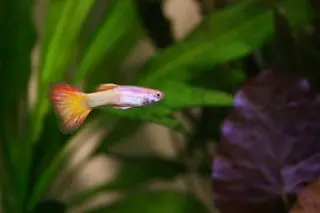As if the duck-rape genitalia arms race and traumatic sex in bed bugs weren’t enough, the research presented in this paper now informs us that male guppies have special penis claws that help them rape females. Guppies are extremely popular aquarium fish that give birth (rather than lay eggs) and have been used for much behavioral research, including on breeding behaviors. Males have a modified anal fin, the gonopodium, that is similar in function to a penis. When breeding, the male approaches and thrusts his gonopodium into a female, ejecting one or more balls of sperm. (If you want to see some amateur guppy porn, there are a number of YouTube videos available, like this one.) Male guppies also have claw-like appendages on their gonopodia. When the scientists removed these “gonopodial claws”, the males weren’t able to transfer as much sperm when mating with unwilling females, but were just fine ...
The dark side of guppy sex (hint: it involves penis claws).
Discover how male guppies use sexual conflict and gonopodial claws to enhance sperm transfer in freshwater fish mating.

Newsletter
Sign up for our email newsletter for the latest science news
More on Discover
Stay Curious
SubscribeTo The Magazine
Save up to 40% off the cover price when you subscribe to Discover magazine.
Subscribe












